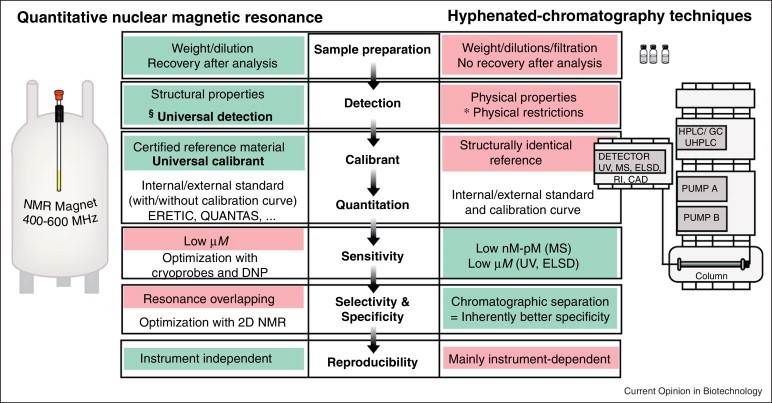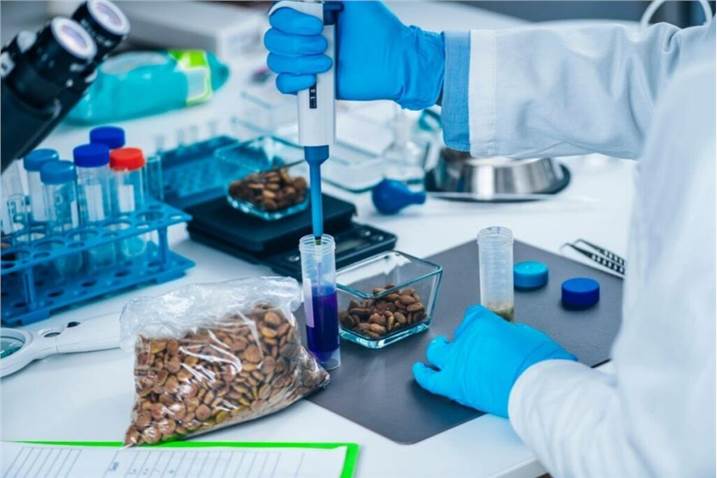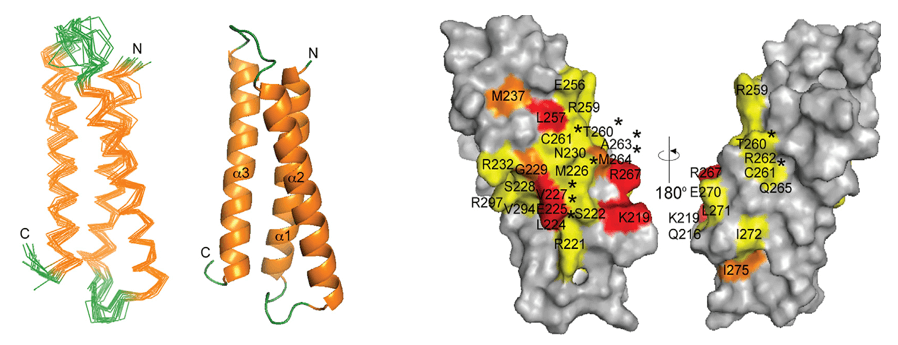Food adulteration—the deliberate addition of inferior, harmful, or unauthorized substances to food products—poses significant risks to public health, economic stability, and consumer trust. From diluted olive oil to melamine-tainted milk, adulteration methods are increasingly sophisticated, necessitating advanced analytical tools for detection. Nuclear Magnetic Resonance (NMR) spectroscopy has emerged as a gold-standard technique for identifying and quantifying adulterants due to its ability to provide structural, quantitative, and untargeted analysis of complex food matrices.
Creative Biostructure provides NMR food adulteration analysis services for foods such as milk, oil, honey, and wine. Explore with us the role of NMR in food adulteration detection, detailing methodologies, case studies and innovations.

Principles of NMR Relevant to Adulteration Detection
NMR spectroscopy detects nuclei with non-zero spin (e.g., 1H, 13C, 31P) in a magnetic field. Key principles critical for adulteration detection include:
- Chemical Shift: Unique resonance frequencies for nuclei in specific chemical environments (e.g., carbonyl groups in melamine vs. natural proteins).
- Signal Intensity: Direct proportionality to analyte concentration enables quantification without calibration curves.
- Multidimensional NMR: Techniques like 1H-13C HSQC resolve overlapping peaks in complex mixtures (e.g., honey adulterated with multiple syrups).
- Relaxation Times (T1/T2): Differentiate molecular mobility between authentic and adulterated components (e.g., added water in milk).
- Isotopic Analysis: Natural abundance 13C /12C ratios (δ13C) or site-specific 2H NMR detect synthetic additives (e.g., corn syrup in honey).
Types of Food Adulteration and NMR's Detection Strategies
| Types | Example | NMR Approach |
|---|---|---|
| Dilution with Cheaper Substances | Water added to milk | 1H NMR quantifies the H2O signal at ~4.7 ppm relative to lactose and fat resonances. |
| Ethanol diluted with water | Ethanol's CH3 triplet (1.1 ppm) and CH2 quartet (3.6 ppm) ratios reveal water content. | |
| Substitution with Inferior Ingredients | Olive oil mixed with sunflower oil | 1H NMR detects diagnostic markers:
|
| Saffron replaced with turmeric | 1H NMR identifies signature apocarotenoids (e.g., crocin at 6.5–7.5 ppm) vs. curcumin in turmeric. | |
| Addition of Synthetic or Toxic Compounds | Melamine in milk | 1H NMR's triplet at 3.3 ppm (triazine ring –NH2 groups) distinguishes it from natural milk proteins. |
| Sudan dyes in spices | 13C NMR identifies aromatic carbons (120–140 ppm) absent in natural spice pigments. | |
| Mislabeling of Origin or Processing | Non-organic foods labeled as organic | Multivariate analysis of 1H NMR spectra (e.g., terpene profiles in Italian vs. Greek olive oils). |
| farmed salmon sold as wild | δ15N NMR detects synthetic fertilizer residues in non-organic crops. | |
| Enhancement of Appearance or Texture | Bleaching of spices | Degradation products (e.g., oxidized carotenoids) detected via 13C NMR. |
| Injection of gelatin into meat | 1H NMR's T2 relaxation reveals abnormal water retention from gelatin or phosphates. |
NMR Methodologies for Targeted and Untargeted Adulteration Detection
Targeted Analysis
Targeted NMR approaches focus on detecting specific adulterants based on their unique spectroscopic signatures. This methodology relies on a priori knowledge of the chemical structure and expected NMR behavior of the contaminant or substituted material.
- Marker-Based Detection: When an adulterant has a well-characterized nucleus, targeted NMR can selectively detect its presence. For example, 19F NMR—owing to the rarity of fluorine in natural food matrices—is exceptionally effective for identifying residues of fluoroquinolone antibiotics in honey or dairy products. Fluorinated compounds yield sharp, distinct signals with minimal background interference.
- Quantitative NMR (qNMR): qNMR enables the absolute quantification of adulterants without the need for calibration curves. Internal standards such as trimethylsilylpropionic acid (TSP) in aqueous media or tetramethylsilane (TMS) in organic solvents are used for integration reference. This method is particularly advantageous for quantifying additives like melamine, synthetic sweeteners, or exogenous alcohols, with excellent repeatability and trace-level sensitivity.
Untargeted Metabolomics
Untargeted NMR metabolomics offers a holistic, unbiased view of the chemical composition of food products. This approach is especially powerful for detecting unknown or emerging adulterants by capturing deviations from the authentic metabolic profile.
Chemometric Workflow:
- Acquisition of high-resolution 1H NMR spectra from both authentic and suspect samples.
- Preprocessing, including phase correction, baseline correction, alignment, and normalization, to reduce analytical noise.
- Multivariate Analysis, such as Principal Component Analysis (PCA) or Partial Least Squares Discriminant Analysis (PLS-DA), to classify samples and detect outlier's indicative of adulteration.
- Biomarker Validation using 2D NMR techniques such as COSY, HSQC, or TOCSY to structurally confirm differential compounds.
 Figure 1. Chemometric assessment of 13C NMR data: Application to anabolic steroid formulations. (Balayssac et al., 2025)
Figure 1. Chemometric assessment of 13C NMR data: Application to anabolic steroid formulations. (Balayssac et al., 2025)
Isotopic Fingerprinting
Site-Specific Natural Isotope Fractionation by NMR (SNIF-NMR) provides an advanced dimension of food authentication by measuring natural isotope distribution within specific molecular positions. This technique is particularly effective in origin verification and detection of synthetic additives.
SNIF-NMR focuses on hydrogen and carbon isotope ratios at specific molecular sites. For example, the δ²H values in ethanol molecules can differentiate fermentation-derived alcohols from petrochemical sources. In high-value food products such as honey, this method detects beet sugar adulteration by evaluating the isotopic profile of glucose or fructose.
 Figure 2. Vanillin isotopic intramolecular 13C profile through polarization transfer NMR pulse sequence and statistical modelling. (Portaluri et al., 2021)
Figure 2. Vanillin isotopic intramolecular 13C profile through polarization transfer NMR pulse sequence and statistical modelling. (Portaluri et al., 2021)
Hyphenated Techniques
To overcome the limitations of standalone techniques, NMR is increasingly combined with chromatographic and mass spectrometric methods, offering enhanced specificity, compound resolution, and structural elucidation capabilities.
LC-NMR and LC-NMR/MS combine the separation power of liquid chromatography (LC) with the molecular insight of NMR, and optionally, mass spectrometry (MS). Such setups are particularly valuable for analyzing complex matrices or identifying structurally similar adulterants.
Case Studies
Case 1. Detection of honey adulteration using benchtop 1H NMR spectroscopy
High-field NMR spectroscopy using superconducting magnets is highly effective for detecting honey adulteration but is expensive, stationary, and requires specialized operation. In contrast, benchtop NMR systems with permanent magnets are affordable, portable, and user-friendly but suffer from lower spectral resolution, limiting their quantitative capabilities. A novel field-invariant, model-based fitting method—rooted in quantum spin system principles—has been developed to overcome these limitations. Using this approach with benchtop 1H NMR (43 MHz), researchers successfully quantified sugar profiles in honey and detected adulteration with brown rice syrup at levels as low as 5 wt%, as well as with corn, glucose, and wheat syrups. The method also demonstrated stability over 60 days of storage.
 Figure 3. (a) Example 1H NMR spectrum of honey sample F (ESI†) mixed with 40% brown rice syrup. This sample was determined to consist of 44.43 and 13% fructose, glucose, maltose and sucrose, respectively. Fitted models for sugar components are shown along with the residual spectrum (elevated scale ×5) after model fitting. (b) 1H NMR spectra of wild flower honey adulterated with increasing amounts of brown rice syrup. Notice the subtle changes in the spectra (as indicated by the arrowed lines) that are impossible to analyze with a traditional peak integration approach. (Rhee et al., 2023)
Figure 3. (a) Example 1H NMR spectrum of honey sample F (ESI†) mixed with 40% brown rice syrup. This sample was determined to consist of 44.43 and 13% fructose, glucose, maltose and sucrose, respectively. Fitted models for sugar components are shown along with the residual spectrum (elevated scale ×5) after model fitting. (b) 1H NMR spectra of wild flower honey adulterated with increasing amounts of brown rice syrup. Notice the subtle changes in the spectra (as indicated by the arrowed lines) that are impossible to analyze with a traditional peak integration approach. (Rhee et al., 2023)
Case 2: Non-targeted detection of milk powder adulteration by 1H NMR spectroscopy and conformity index analysis
A non-targeted authentication method using high-field solution-state 1H NMR spectroscopy combined with conformity index analysis was developed to detect adulteration in skim and nonfat dry milk powders (MP). In a pre-validation study involving global authentic MP samples and samples spiked with eight adulterants, the method detected nitrogen-rich adulterants like melamine and dicyandiamide at very low levels (≥ 0.005–0.05% w/w). Higher detection thresholds (≥ 0.5% w/w) were required for substances like urea, sucrose, and maltodextrin. Although ammonium sulfate was not directly observed, its presence was inferred through changes in milk metabolite signals at 5% w/w. Adulteration with soy protein isolate and whey protein concentrate was not detected, likely due to poor solubility. Overall, the approach shows strong potential for milk powder authentication and adulteration detection.
 Figure 4. Superimposition of expanded 1H NMR spectra for all commercial milk powders (MP) in this study, including day one S097 triplicate spectra, illustrating notable differences observed in regions containing: (a) aliphatic protein resonances, ˜0.65-0.92ppm, (b) MP component tentatively assigned to β-hydroxybutyrate ˜1.068-1.103 ppm, (c) water, ˜3.284-3.366 ppm and (d) carbohydrate anomeric proton, ˜5.12-5.96 ppm. (Bergana et al., 2019)
Figure 4. Superimposition of expanded 1H NMR spectra for all commercial milk powders (MP) in this study, including day one S097 triplicate spectra, illustrating notable differences observed in regions containing: (a) aliphatic protein resonances, ˜0.65-0.92ppm, (b) MP component tentatively assigned to β-hydroxybutyrate ˜1.068-1.103 ppm, (c) water, ˜3.284-3.366 ppm and (d) carbohydrate anomeric proton, ˜5.12-5.96 ppm. (Bergana et al., 2019)
Related Reading
In summary, NMR spectroscopy is a cornerstone in the fight against food adulteration, offering unparalleled specificity, reproducibility, and versatility. By combining targeted quantitation, untargeted metabolomics, and isotopic analysis, NMR addresses both known and emerging adulteration threats. As portable systems, AI integration, and global databases evolve, NMR will become even more accessible and predictive, safeguarding food integrity worldwide.
Creative Biostructure is your trusted partner to protect your brand with our advanced NMR-based food adulteration detection. Contact us today to discuss your project!
References
- Balayssac S, Assemat G, Danoun S, Malet-Martino M, Gilard V. Quantitative 1H and 13C NMR and chemometric assessment of 13C NMR data: application to anabolic steroid formulations. Molecules. 2025;30(9):2060. https://doi.org/10.3390/molecules30092060
- Bergana MM, Adams KM, Harnly J, Moore JC, Xie Z. Non-targeted detection of milk powder adulteration by 1H NMR spectroscopy and conformity index analysis. Journal of Food Composition and Analysis. 2019;78:49-58. https://doi.org/10.1016/j.jfca.2019.01.016
- Portaluri V, Thomas F, Jamin E, et al. Vanillin isotopic intramolecular 13C profile through polarization transfer NMR pulse sequence and statistical modelling. Food Control. 2021;130:108345. https://doi.org/10.1016/j.foodcont.2021.108345
- Rhee Y, Shilliday ER, Matviychuk Y, et al. Detection of honey adulteration using benchtop 1H NMR spectroscopy. Anal Methods. 2023;15(13):1690-1699. https://doi.org/10.1039/D2AY01757A





